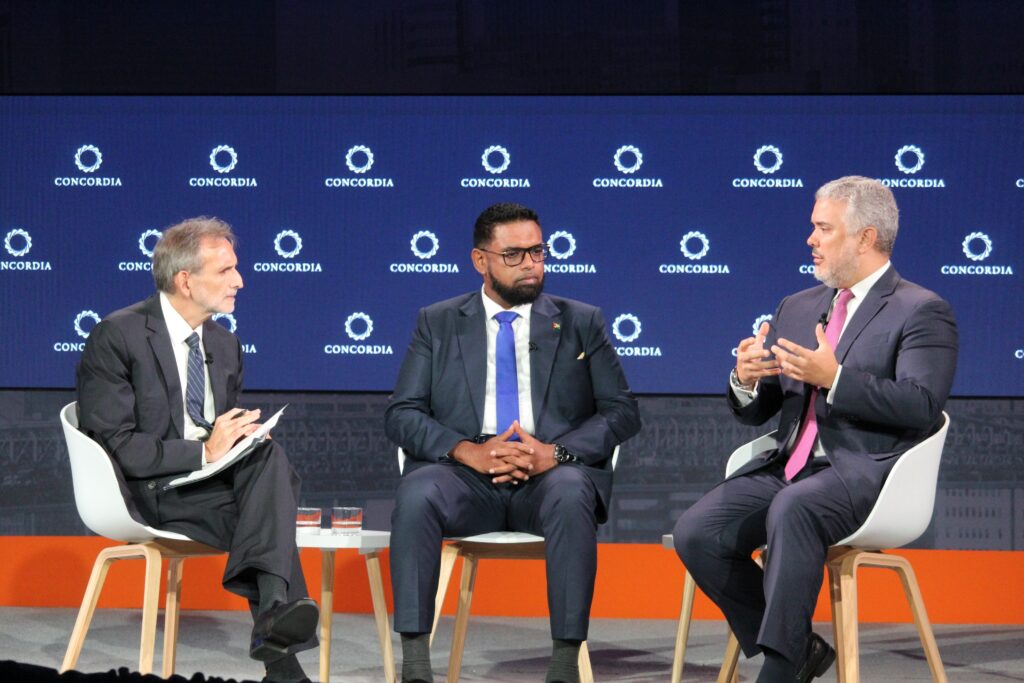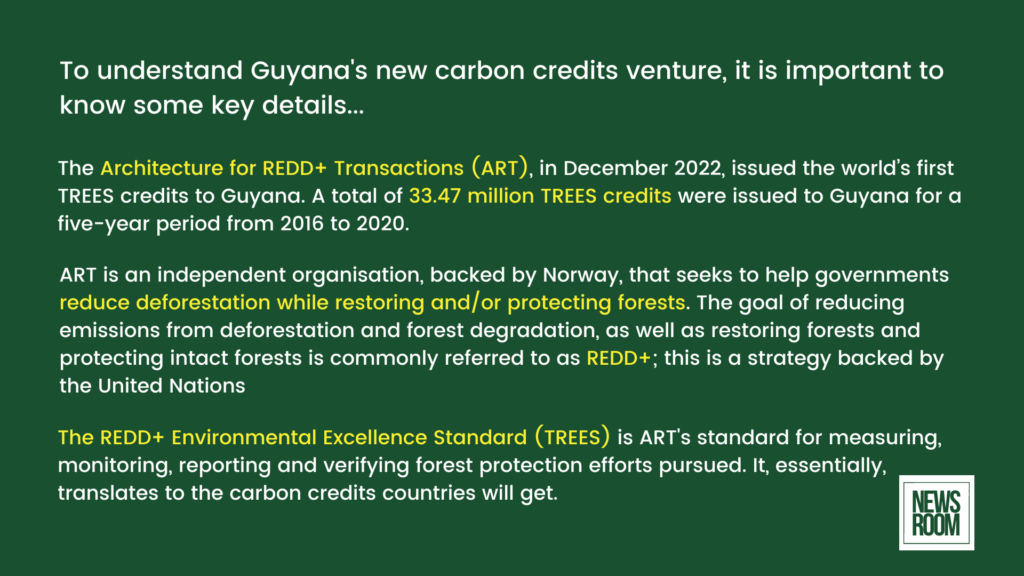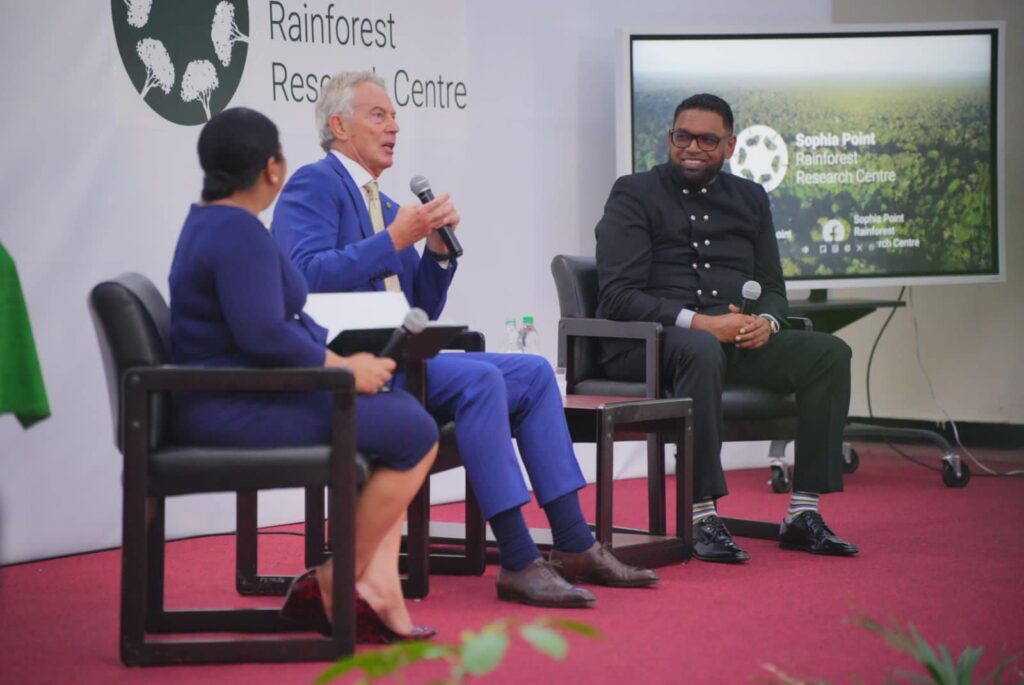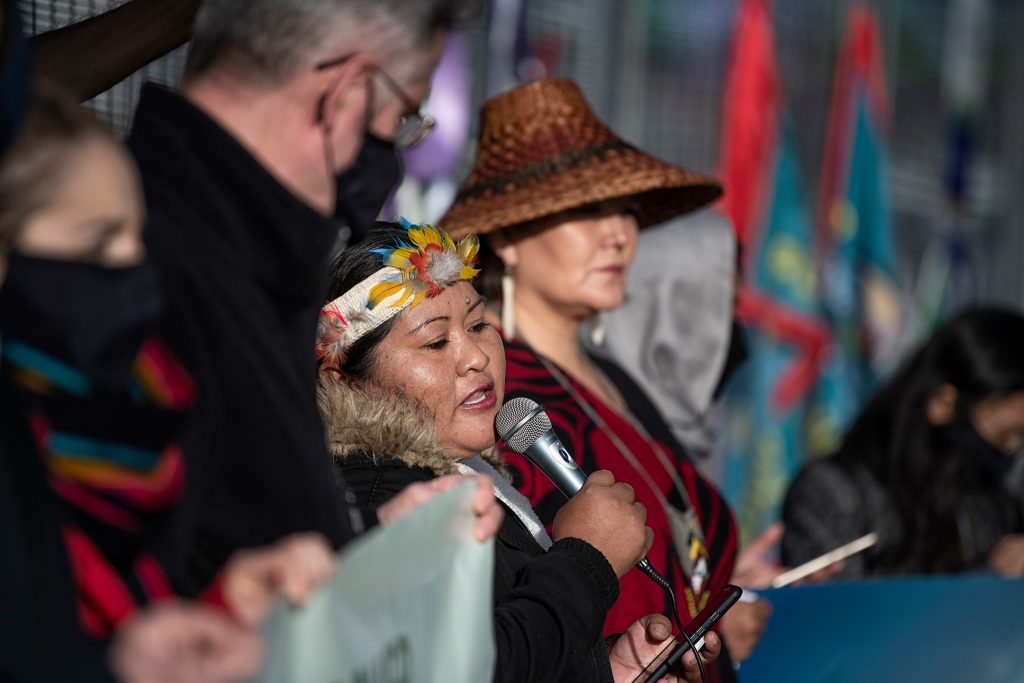Prolific oil finds offshore Guyana have made the tiny country, located on the northern edge of South America, the talk of the town. With all eyes on Guyana now, the country hopes to bring global attention to its ambitious forest-saving plans.
President Dr. Irfaan Ali travelled around the world over the last two years talking about Guyana’s revised Low Carbon Development Strategy (LCDS). In short, this is a national plan detailing how Guyana will pursue development while protecting its vast, intact forests that help to trap harmful greenhouse gas emissions.
In September, Dr. Ali went from event to event at the United Nations General Assembly (UNGA 78) and on the sidelines, talked about Guyana’s nuanced approach to low carbon development.

At a Concordia event on September 18, he said developing countries should be allowed to exploit their resources because they were not traditionally given the opportunity to do so. For Guyana, that means pursuing a prolific oil and gas industry while earning from the forests that have not been cut down and harnessing other resources.
But he expressed concerns that developing countries seem to be chastised for finally harnessing their resources.
“When are the developing countries going to get the opportunities to exploit their resources to fund development?” President Ali asked during a panel discussion with former Colombian President Iván Duque.
Guyana’s pursuit is a tricky one. The global oil and gas industry is notorious for emitting carbon dioxide and other harmful greenhouse gases which has resulted in the current climate crisis.
On the other hand, Guyana has not been a large emitter of harmful gases but its forests have helped to trap emissions from other countries for years. If cut down and used for other productive activities, like agriculture or mining, those forests would not help to save the environment.
So Guyana is arguing that it must earn money from the forests. It hopes to do so by trading carbon credits, as it has already done with the Hess Corporation, one of the companies benefiting from oil and gas production offshore Guyana.
The plan to attract global attention and support for Guyana’s forest-saving efforts seems to be working.

Mr. Duque, for one, expressed his support for the LCDS. During the Concordia event, he said he was “impressed” by efforts to promote low carbon development while using the money earned from the oil and gas industry to fund development needs.
He isn’t the only person noticing Guyana’s ambitions.
Former Prime Minister of the United Kingdom Tony Blair visited Guyana in August and addressed Guyana’s forest plans.
His visit was described as historic since it was the first time a former or sitting British Prime Minister visited the South American country that was once under British rule. Mr. Blair had one public appearance: a conversation on the environment with President Ali at the University of Guyana’s Turkeyen campus.
“I think you’re in a very strong leadership position on this [forest protection and compensation] because you are one of the very few countries in the world that actually preserved their rainforests,” the former British Prime Minister said at that event.

He also opined that Guyana’s plan to harness money earned from oil and gas production to fuel national low carbon development efforts is one that can possibly be used to demonstrate how developing countries can exploit their resources and fund their development.
According to him, a global mechanism must be developed so that the “supposed contrast” of either harnessing your natural resources or protecting the environment is eliminated. For him, the two are not mutually exclusive.
He added, “That’s why this Low Carbon Development Strategy (LCDS) is important because it has worked for you over the years but it can be developed over the next few years if you get the right propulsion from the COP28 to something very, very big.
“… and I think one thing that is quite remarkable given it was done in 2009, and frankly it was quite difficult to do a strategy like that, is that the President will be able to come to COP28 and speak from a position of credibility and frankly, in the climate debate, that’s a quite rare commodity.”
Months before, Executive Vice President of the European Commission, Frans Timmermans expressed support for Guyana’s efforts to balance a low-carbon development agenda with new oil and gas production.

The Executive Vice President told President Ali: “The ambition of your government, Mr. President, to make sure that Guyana in its economic development, in the development of the fossil fuel industry, still maintains its high ambition for climate neutrality and the maintenance of your natural riches is something we want to be part of.”
He also noted that the “example of Guyana” should be seen by the world and the EU would be happy to support Guyana’s showcase at COP28.

Recognition seems to be growing for Guyana’s plans but concerns aren’t nonexistent.Some Indigenous people are worried that Guyana’s new plans to earn from forest protection efforts will limit their ability to use the land as they have traditionally done.
“… We depend on the land for our livelihoods. When we do not have money in our pockets, we go there to fish, we go there to hunt (and) we go there to gather.
“So we fear that they might have restrictions, you know, rules or guidelines that will be made to say how we use our forests,” Immaculata Casimero, a Wapichan Indigenous woman from the South Rupununi community of Aishalton, told a New York University Forum at the sidelines of the UNGA.
She also makes it clear that Indigenous people, like the Wapichan people in the south, have “done the work” to protect the forests. So she believes they too should be adequately compensated.

The LCDS acknowledges this and stipulates that 15% of any money earned through the carbon credits venture will go directly to all 240+ Indigenous communities in Guyana. The money is divided and distributed in sums based on the size of the communities.
With payments from Hess received, these disbursements have started and Indigenous communities are pursuing numerous ventures.
But Laura George, from the local non-governmental organisation the Amerindian People’s Association, told the NYU forum that there are other concerns.
George believes the consultations for the special ART TREES carbon credits certification were not adequate. She also believes the carbon credits venture is “pitting us against each other” because some communities support the venture and want the funds, while some groups have their concerns.
At the recently-concluded National Toshaos Council (NTC) Conference, an annual gathering of Indigenous chiefs, several leaders presented on how they were using the funds in their communities.
As of September, 225 communities received payments and the remaining 17 are due to receive theirs.
This story was published by The News Room with the support of the Caribbean Climate Justice Journalism Fellowship, which is a joint venture between Climate Tracker and Open Society Foundations.